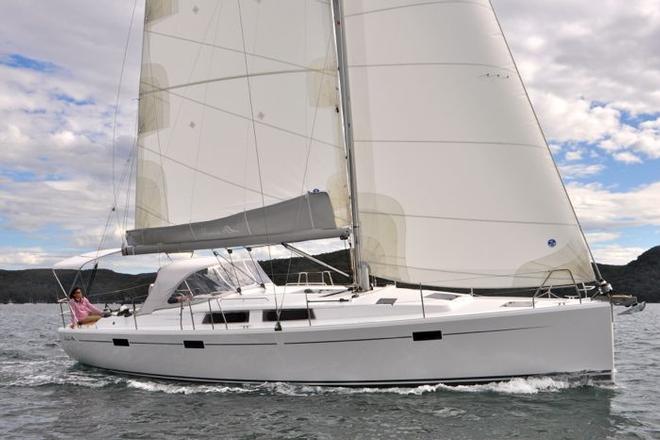Yacht of the Week- Hanse 415
by Des Ryan on 26 Nov 2013

Hanse 415 sailing SW
So there's a new Hanse 415 out this year, combining precision building (well they're German aren't they) and excellent styling. Not only that, the new boat also shows a nice ease of handling which belies how well it sails. It's an ideal boat for a family cruiser, but can turn on a great show of speed.
The 415 replaced the very popular Hanse 400, of which more than 700 hulls were built, so the bar was set high for this new model. Designer, Rolf Vrolijk, always keeps the focus on speed. (He was also the mastermind behind the lines of America’s Cup winner Alinghi.)
But if that's not so important for you what you will really love is just how easy and fun the 415 is to sail, especially shorthanded.
Design, Deck & Rigging
There are very few obstructions that interrupt the flow of the lines from stem to stern on this boat. From the opening anchor locker on the bow, wide decks run aft, neat and simple, great for deck work.
The nearly plumb bow and low cabin top give the boat an stylish look, and the deck is clear, with flush hatches and a low coach roof.
A wide drop-down transom forms the swim platform and extends the cockpit when it’s open. An excellent feature is that the life raft storage is tucked neatly in the back and is accessible when the manually controlled transom is deployed.
The boat might be two feet longer at the water line, but the sail plan was kept the same, so the 415 should be slightly speedier than the 400. It's also beamier and has a little more headroom - small changes which make a very big difference.
It's a fractional rigged boat with a tapered deck-stepped mast with double aft-swept spreaders and mid-boom sheeting. I am not normally keen on these.
The self-tacking jib is great to have when sailing shorthanded, which, for cruisers, is much of the time. A traditional full-battened main is standard, but you can add lazy jacks and a StackPack to help gather the dropping sail or opt for in-mast furling - all good features for the cruising sailor.
All the controls in the cockpit are within the skipper’s reach. The cockpit, though, is user friendly, with most of the controls out of the way of guests.
Layout and accommodation:
For a production boat, the Hanse 415 comes in many versions for the layout. There are dozens of variations in the interior, from fabric and wood choices to layout and configuration differences.
There is actually a choice of six layouts, as each of three sections has two options. The A section includes the forepeak, which houses the master stateroom and an optional head. The middle B section includes the salon and offers variations in the galley shape. The C section offers a choice of two cabins aft or one cabin with a really nice storage lazarette to starboard.
Below are clean, minimalist lines and very functional furniture that creates a chic living space. The L-shaped galley is to starboard and has large working surfaces, so the chef and a prep-cook can work simultaneously. Opposite the galley is a head with a stall shower that could serve as a wet locker for wet weather gear.
The two-cabin version has a longer galley with more countertop space, or you can opt for a smaller galley with a full workroom aft where you can add a large freezer. This area leads directly into the cavernous starboard lazarette with built-in shelves and access from the cockpit.
The pluses below include an elegant, angular and very practical design that looks to be of better quality than most production boats. The plentiful overhead hatches, integrated sliding polycarbonate companionway washboards and side ports add lots of light in the salon, and there is 6 feet, 5 inches of headroom. In the minus column is the stateroom bed, which is a traditional V berth rather than an island like many other boats of this size have. Also, with only 40 gallons of fuel, the 415 will be challenged when making passages. A discussion with a dealer might yield some ideas on the possibility of adding tankage.
Access to systems is fairly typical, with the engine below the companionway steps and additional access panels via the aft cabins. Through-hulls, batteries and transducers are easy to reach. The fuel tank is aft to starboard, while the water tank is under the master berth forward.
The Hanse line is built in Griefswald, Germany, where boats have been built since the 1300s, and Hanse has had a state-of-the-art factory staffed with local craftsmen for the past 20 years. Hanse has a top reputation for boats which don't flag under heavy weather, and are sturdy yet lively. This is another one.
If you want to link to this article then please use this URL: www.sail-world.com/117057